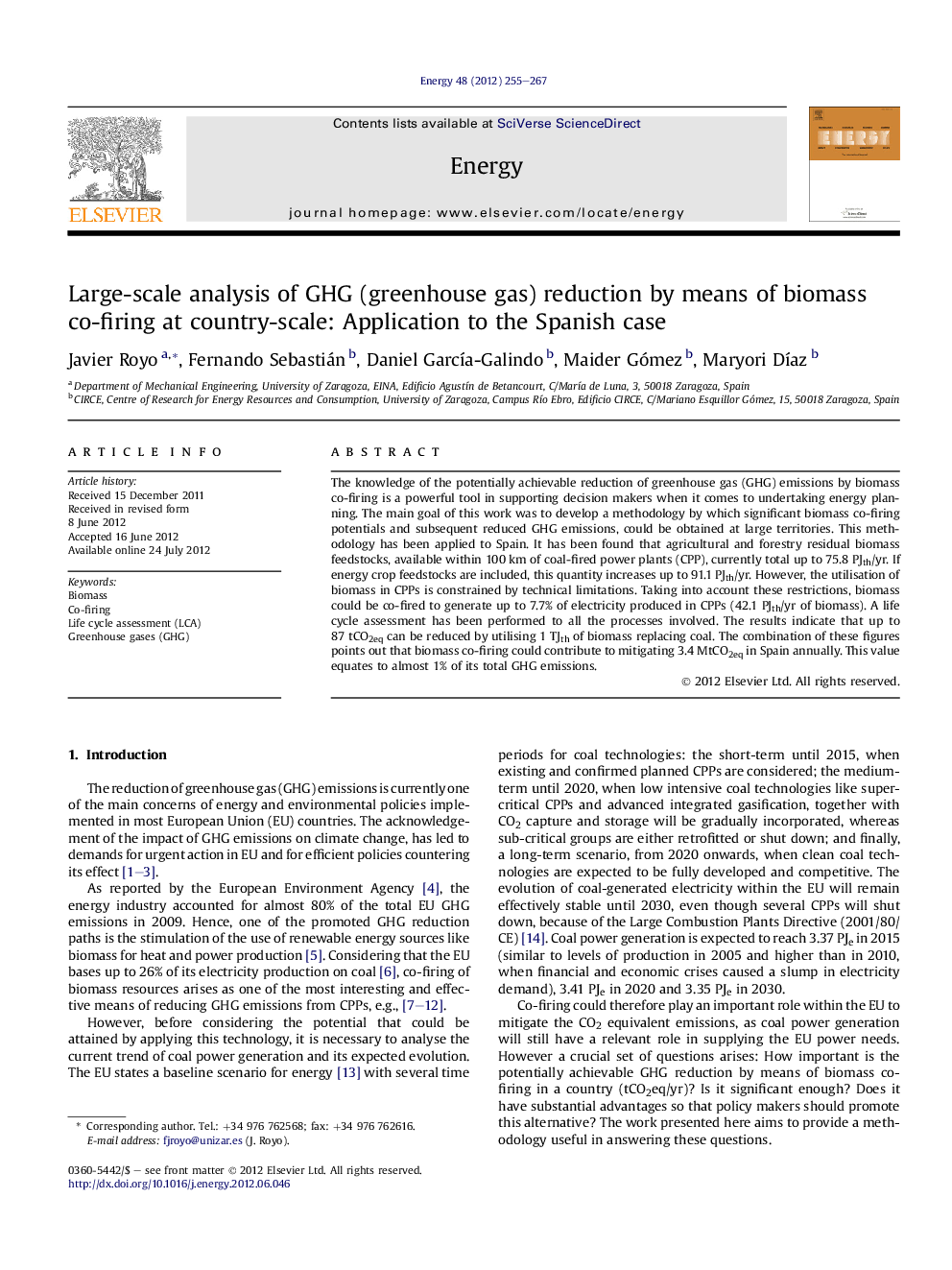| Article ID | Journal | Published Year | Pages | File Type |
|---|---|---|---|---|
| 1733347 | Energy | 2012 | 13 Pages |
The knowledge of the potentially achievable reduction of greenhouse gas (GHG) emissions by biomass co-firing is a powerful tool in supporting decision makers when it comes to undertaking energy planning. The main goal of this work was to develop a methodology by which significant biomass co-firing potentials and subsequent reduced GHG emissions, could be obtained at large territories. This methodology has been applied to Spain. It has been found that agricultural and forestry residual biomass feedstocks, available within 100 km of coal-fired power plants (CPP), currently total up to 75.8 PJth/yr. If energy crop feedstocks are included, this quantity increases up to 91.1 PJth/yr. However, the utilisation of biomass in CPPs is constrained by technical limitations. Taking into account these restrictions, biomass could be co-fired to generate up to 7.7% of electricity produced in CPPs (42.1 PJth/yr of biomass). A life cycle assessment has been performed to all the processes involved. The results indicate that up to 87 tCO2eq can be reduced by utilising 1 TJth of biomass replacing coal. The combination of these figures points out that biomass co-firing could contribute to mitigating 3.4 MtCO2eq in Spain annually. This value equates to almost 1% of its total GHG emissions.
